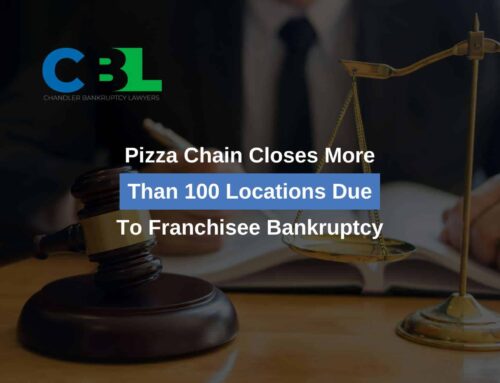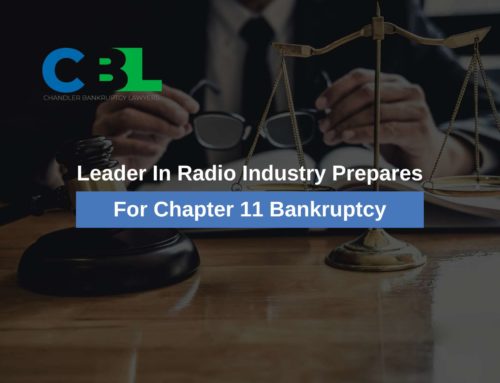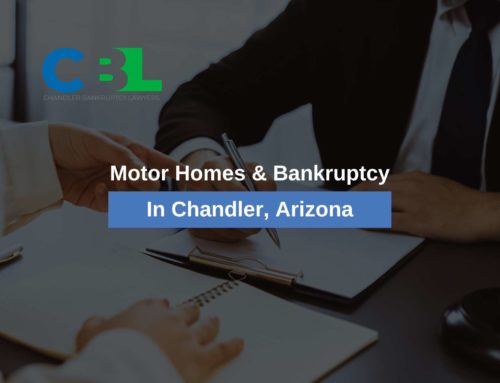Danny Trejo has long been known for his tough-guy persona and has become even more well-known due to his foray into the culinary industry. This former convict has already turned his life around at least once, but news has recently broken of Trejo’s Chapter 11 bankruptcy filing earlier this year. He is hardly the first famous actor to declare bankruptcy, and probably won’t be the last. It may just be more surprising than others due to his successful taco and donut restaurants. It’s important to note that Trejo filed for Chapter 11 bankruptcy, which works much differently than its more common counterparts, Chapter 7 and Chapter 13 bankruptcy. For more information about all of your bankruptcy options, discuss your situation with one of our bankruptcy lawyers free of charge- click here or call 480-780-2211 to get started today.
How Such a Big Star Ends Up In Bankruptcy Court
Danny Trejo was previously a champion boxer in San Quentin State Prison in California. After finding success as an actor, he used that fame to start a record label and multiple eateries. However, none of his businesses are included in his Chapter 11 bankruptcy filing- it is solely a personal bankruptcy. The actor’s representative noted that he had accrued $2.5 million in debt due to mistakenly claiming deductions on his taxes. All of these deductions turned into back tax debts that caught up with him at once. Therefore, he filed for Chapter 11 bankruptcy while he sorted out the matter.
Other Public Figures To Declare Bankruptcy
Countless celebrities, politicians, and other household names have declared bankruptcy throughout the years.
- Francis Ford Coppola: The famous director ended up in bankruptcy court after self-funding the movie One From The Heart in 1982.
- Toni Braxton: The Unbreak My Heart songstress has filed for bankruptcy twice- in 1998 and 2010.
- Mike Tyson: The notorious fighter listed debts of $23 million when he declared bankruptcy in 2003.
- Burt Reynolds: It’s hard to imagine a man with such an iconic mustache would declare bankruptcy, but the star filed his bankruptcy petition in 1996.
- Janice Dickinson: “The World’s First Supermodel” declared bankruptcy in 2013 due to IRS and plastic surgery debts.
- Meat Loaf: Otherwise known as “Michael Aday,” the rock singer had to sell his music to stay afloat after filing for bankruptcy in 1983.
- MC Hammer: The “Can’t Touch This” singer, otherwise known as “Stanley Burrell,” filed for bankruptcy with a reported $10 million in debts in 1996.
Chapter 11 vs. Chapter 7 & Chapter 13
Danny Trejo filed a personal Chapter 11 bankruptcy, which isn’t seen too frequently in bankruptcy court. Most of the time, businesses use Chapter 11 bankruptcy for creditor protection and the option to keep the business running. Chapter 11 bankruptcy is much more complex and costly than Chapter 7 and Chapter 13 bankruptcy. It requires that the debtor’s top creditors join together to form a committee that is heavily involved in the case. The committee will need to vote to approve the debtor’s plan to emerge from bankruptcy or submit its own. However, there are small business and subchapter V filing options that allow Chapter 11 bankruptcy debtors to bypass the creditor committee requirements and speed up the case in general.
It isn’t entirely common for an individual to declare Chapter 11 as a personal bankruptcy. However, someone with significant assets and a complicated debt structure might benefit from Chapter 11 bankruptcy if they have the resources to declare it. It is much for common for individual consumers to use Chapter 7 or Chapter 13 bankruptcy. If you declare bankruptcy, you’ll probably end up using one of these too.
Chapter 7 bankruptcy is the most commonly filed of any type of bankruptcy. Bankruptcy wipes several types of debt away clean. This includes credit cards, medical bills, personal loans, certain tax debts, and more- as long as the debt is unsecured and doesn’t have priority status. It only takes about 3-6 months for the court to discharge unsecured debts in Chapter 7 bankruptcy. Like the other types of bankruptcy, Chapter 7 bankruptcy debtors are protected from their creditors during their cases due to the automatic stay. Not everyone can declare Chapter 7 bankruptcy. Among other restrictions, there are limits on how much income the debtor can have if they want to utilize Chapter 7 bankruptcy protections.
Chapter 13 bankruptcy is sometimes also referred to as the wage earner’s bankruptcy. Instead of clearing debts, it rearranges them into a payment plan. Instead of disqualifying debtors for having too high of income, many debtors can’t get into a Chapter 13 bankruptcy because their income isn’t high enough. Bankruptcy fees, secured debts (except for a primarily residential home mortgage), and priority debts must be paid fully in a Chapter 13 bankruptcy plan. Unsecured debts only need to be paid to the extent that the debtor’s disposable monthly income allows. The payment plan will last 3 years if the debtor’s income level is below the state median income level but will last 5 years if the debtor’s income exceeds the state median income.
It’s hard to boil down each chapter of bankruptcy into just a few sentences. If you need help determining which chapter of bankruptcy is best for you, our bankruptcy team offers free consultations. To schedule your free phone consultation today, click here or call 480-780-2211.
Tax Debts In Bankruptcy
Many tax debts are considered priority debts, which makes them nondischargeable in Chapter 7 bankruptcy, and means they must be paid in full in a Chapter 13 bankruptcy payment plan. Tax debts must meet certain requirements to lose their priority status and become easier to discharge in either type of bankruptcy. They include:
- The tax filing year is at least 3 years before the bankruptcy filing
- The returns were filed at least 2 years before the bankruptcy
- The tax debts were assessed at least 240 days before the bankruptcy
- No tax fraud committed in the tax returns
If you are unsure about whether or not your tax debts can be discharged in bankruptcy, you should discuss your situation with an experienced lawyer. To schedule your risk-free phone consultation, click here or call 480-780-2211.
Let Our Experienced Bankruptcy Professionals Help You Decide If Bankruptcy Is Right For You
A successful actor and restauranteur’s bankruptcy filing shows that mismanaged debt can happen to just about anyone. Back taxes might be something you have in common with a Hollywood celebrity. Our debt relief lawyers can assess your situation and help you decide if Chapter 11 bankruptcy, Chapter 7 bankruptcy, Chapter 13 bankruptcy, or some other form of debt relief would be the most effective. At Chandler Bankruptcy Lawyers, If you’re eligible for bankruptcy, you may also qualify to file using our Zero Down payment plan option. This payment option allows you to file your case- triggering bankruptcy protections- and pay for it afterward. Bankruptcy could be just the tool you need to get you back on your feet and headed in the right direction financially. However, you can’t experience debt relief from bankruptcy until you get the process started. Contact us to schedule your free initial consultation today or call 480-780-2211.

1731 West Baseline Road #101
Mesa, Arizona 85202
Phone:(480) 448-9800
Additional assistance is available from our Arizona Bankruptcy Experts:
Gilbert Bankruptcy Attorneys
Tucson Bankruptcy Lawyers
Glendale Bankruptcy Lawyer
Chandler Bankruptcy Lawyer
Tempe Bankruptcy Lawyers
Arizona Bankruptcy Attorneys
Peoria Bankruptcy Lawyers






